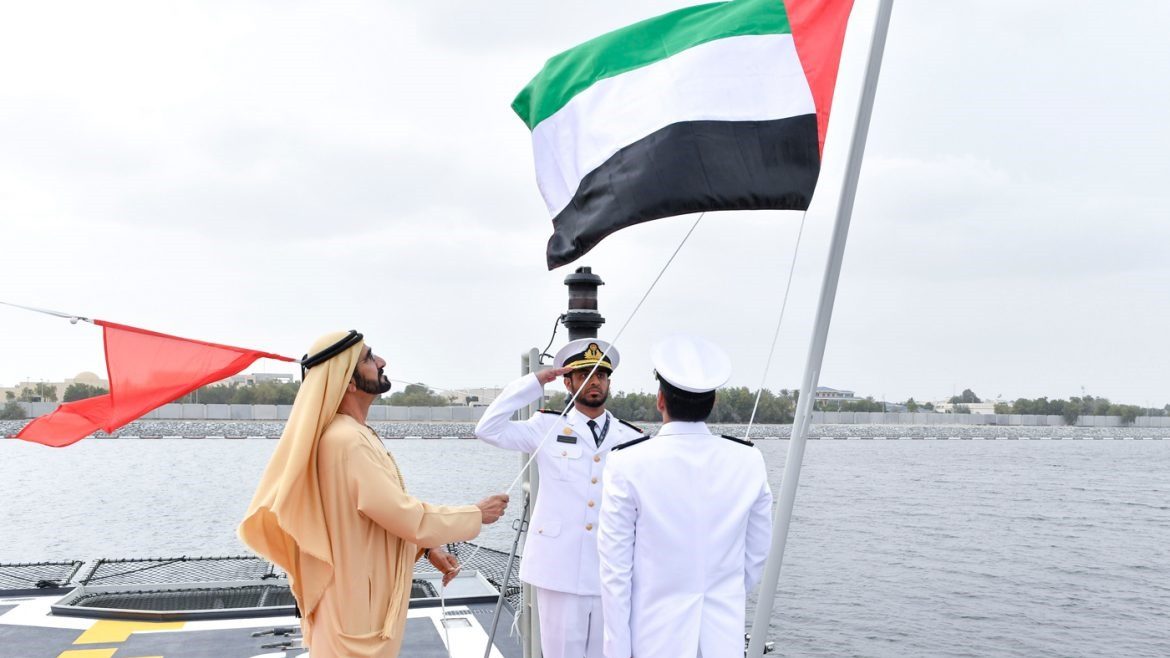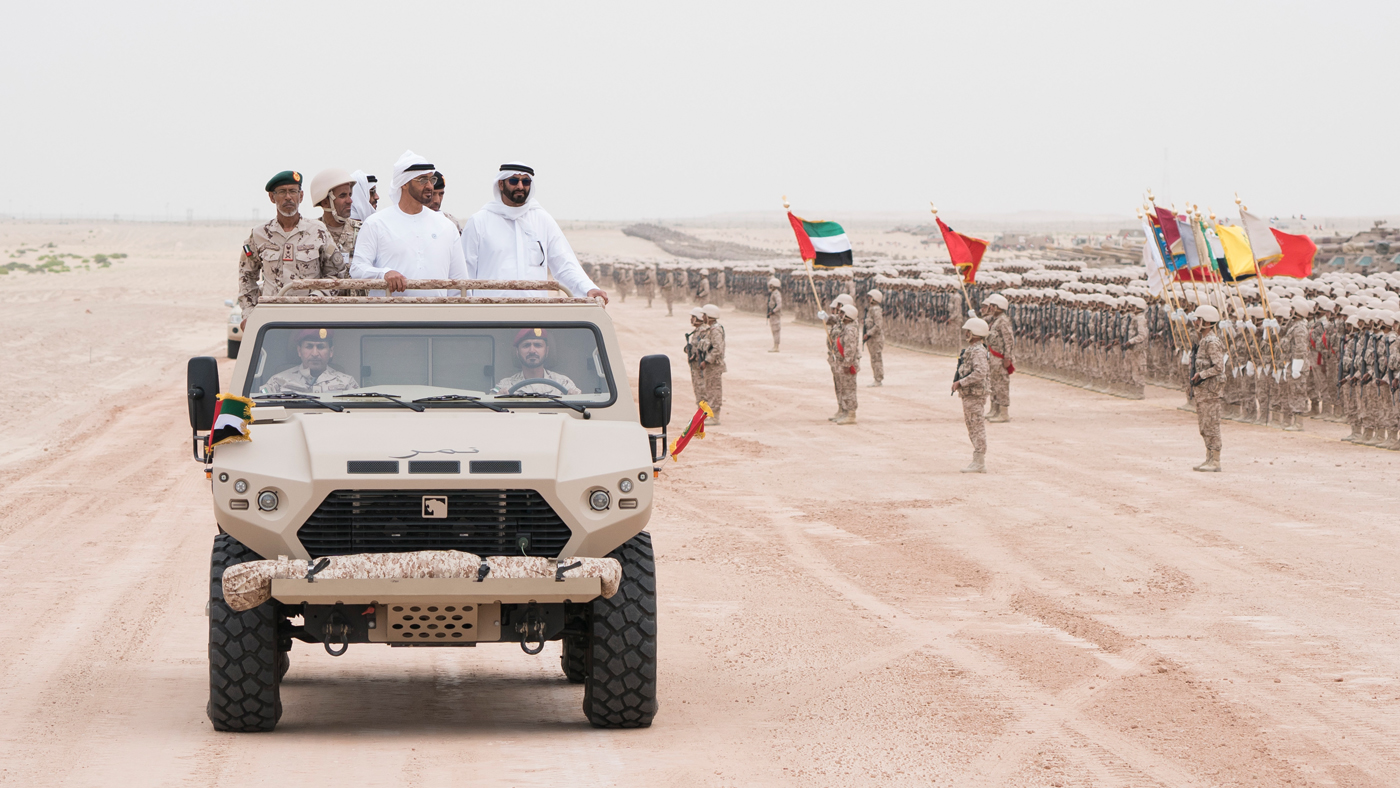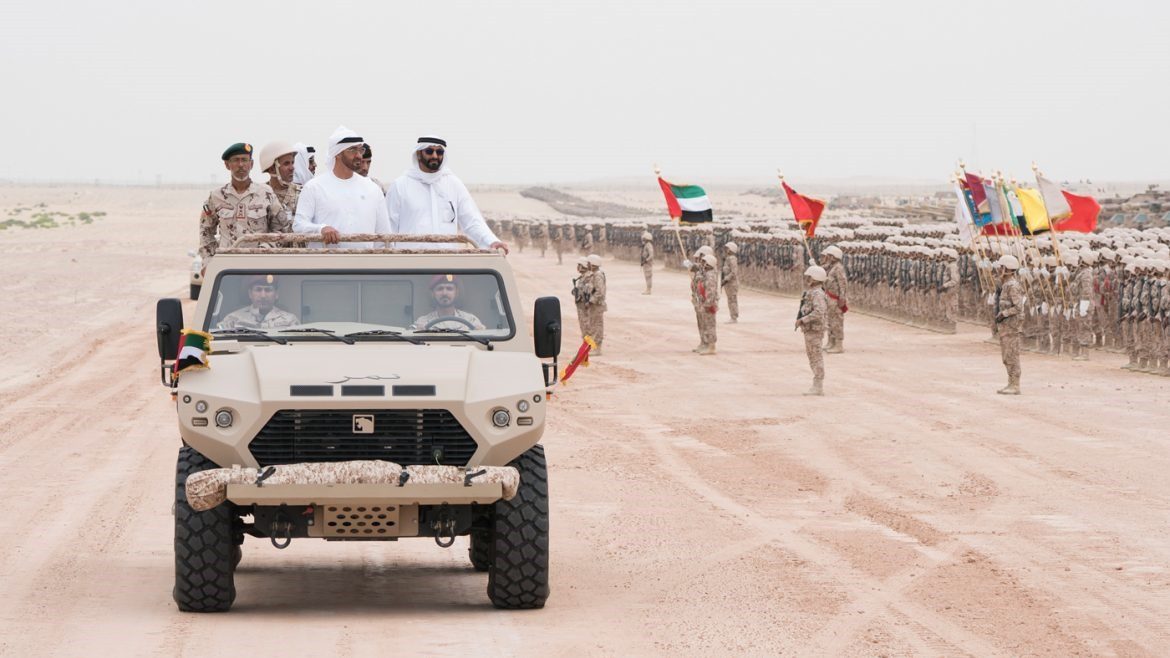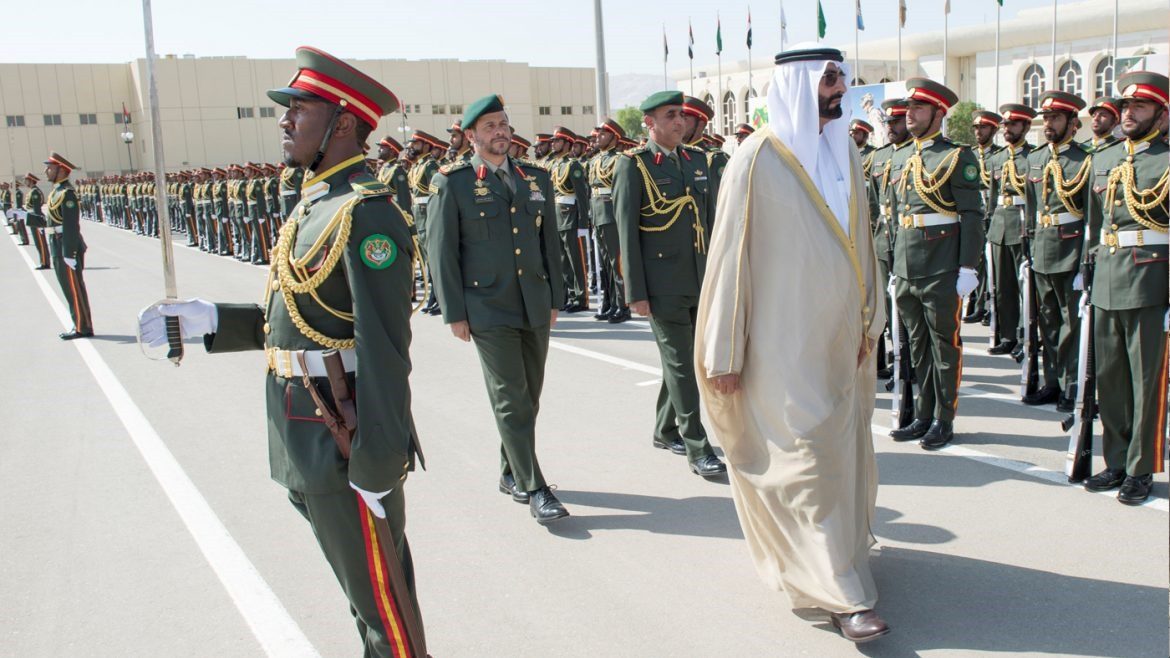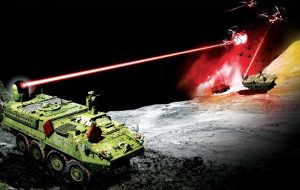On May 10, 2020, the Iranian military announced that 19 people had been killed and 15 wounded in a missile attack on a warship during exercises in the Gulf of Oman by another Iranian ship and that the warship had been towed to shore for “technical investigations.”
”During exercises conducted by several Navy ships in the waters of Jask and Chabahar, the light support vessel Konarak was hit by a missile accidentally fired by another Iranian warship during a live fire exercise,” a statement on the army’s website said.

In war, soldiers die in three main ways: the first, at the hands of the enemy and its weapons, the second because of individual accidents and mistakes, and the third, is by friendly fire, which puts military leaders in an embarrassing situation they always try to avoid and deny.
Most of these accidents happen due to the lack of the ability to distinguish between friend and foe.
Friendly fire accidents are inevitable in wars, given the battlefield conditions and the overwhelming tensions and pressures, which explains the importance of accurate and rapid identification of the types and characteristics of different weapons and equipment.
Research proved that without systems designed to distinguish between targets at long ranges, technologically advanced weapons, which are launched from a distance, are difficult to use without accidents with friendly forces.
It is believed that most future conflicts will involve allied and collaborating forces, which underlines the need for a method free from complexity and ambiguity to distinguish these forces.
Therefore, the common subject that occupies the military planners’ is the complicated problem of distinguishing friend from foe, given the continuous advancement in modern arms, weapon systems, and equipment on the battlefields and airspace in addition to the high mobility, complexity, and density of the electromagnetic spectrum, as well as the short time available for procedures reaction and threat confrontation.
This problem requires the use of identification systems that operate in complex conditions and flight in crowded airspace, with multiple ships at sea, and combat vehicles on the battlefield so that all these targets are distinguished on the screens, without interfering with one another.
Causes of friendly fire accidents
The causes of friendly fire accidents, in general, are due to many factors, including:
1- Lack of procedures for fire control, maneuvering, and movement.
2- Lack of navigation capabilities.
3- Failure to keep up with the battle and submit the necessary reports at the specified time and place.
4- Ignorance of dangerous locations on the battlefield, such as engineered obstacles and minefields.
5- The inability to directly distinguish friendly forces from hostile forces.
6- Lack of clarity of orders and instructions.
7- Low levels of training.
The problem of the past, present, and future
Friendly fire incidents have been happening for a long time, in the past, most of the weapons used had a relatively short range and were used for direct shooting, and the destructive power of these weapons was relatively limited.
In the Middle Ages, knights used brightly colored emblems on their shields to distinguish, then the colors of military clothing were used as a means of distinguishing warring forces.
During the First World War, there were many incidents of soldiers being injured in trenches by friendly fire fired coming from behind them, and there was no way to inform the crews of these guns of the error to correct it, and the artillery was always responsible for the most friendly fire injuries, due to the inaccuracy of aiming, the length of the range, and therefore, firing on invisible targets.

Some studies have estimated the number of soldiers killed in the First World War by friendly fire at about 75,000 soldiers.
During the Second World War, when huge forces of military vehicles were mobilized, or when sea-landing or storming operations were being conducted, pilots of air support carrying out operations on the battlefield had to distinguish the weapons of friendly forces from the weapons of the enemy, and therefore, Clear agreed-upon signs, were placed over these weapons.
However, there were casualties among the soldiers, and many planes were shot down by friendly fire, and the losses in the American soldiers with friendly fire amounted to about 10% of the total American losses, and as a result, some areas were designated off-limits to aircrafts flying at low altitudes, and anti-aircraft guns fired at any aircraft flying at an altitude of less than 1,000 meters, but this procedure was not successful, because friendly aircraft were repeatedly forced to fly over prohibited areas, due air combat conditions or because of navigational errors.
During the fifties of the last century, warplanes depended on direct vision to distinguish hostile targets, and their pilots did not put much trust in the devices designed to identify hostile and friendly aircraft.
Given that the speeds of modern aircraft have exceeded the sound barrier, the reaction time of pilots was reduced to a few seconds, also the range of artillery and missiles has increased so they are now able to threaten their targets outside the range of vision.
In addition, there have been problems in distinguishing aircraft that are similar in appearance, such as the F-15 and “Sukhoi-27” group, or the “Mig-23” and “Mirage-3” group, as well as problems in distinguishing submarines using conventional sonar devices.
In the Vietnam War, the incidence of friendly fire among American soldiers ranged between 15% and 20% of the total casualties, and during the US invasion of Panama, it was reported that about 60% of the 347 casualties among US soldiers were caused by friendly fire.
According to Pentagon data, friendly fire in the Desert Storm operation killed 35 soldiers and wounded 72 others in 28 separate incidents, 16 of these incidents occurred in combat on the ground, resulting in the death of 24 soldiers and injuring 57 more.
While 11 soldiers were killed and 15 wounded in 9 incidents during which planes fired at ground forces.
According to sources in the Pentagon, two such incidents resulted in the death of 14 soldiers. On January 29, 1992, an A-10 aircraft belonging to the US Air Force fired a “Maverick” missile that accidentally hit a light combat vehicle belonging to the US Marines, killing 7 soldiers and injuring 2.
Without systems designed to distinguish between aircraft, the air-to-air weapons launched by aircrafts can accidentally hit friendly warplanes. For example, on May 25, 1981, a British “Jaguar” plane flying over West Germany was hit by a “Sidewinder” missile, launched from a British “Phantom” plane, as a result of an error in the identification device.
Interestingly, technical development can be a direct cause of the increase in friendly fire incidents. For example, with the use of lasers and GPS devices, forces tend to be more confident that they can approach their friendly forces more, and here the danger increases.
In one such case, an American bomb weighing two thousand pounds fell near a prison in the city of Mazar-i-Sharif in Afghanistan shortly after the American forces entered this war, wounding several American soldiers and soldiers of the pro-American Northern Alliance during a battle to take control of this prison.
This incident occurred as a result of an American soldier changing the batteries of the GPS device that directs the bomb, and the soldier neglecting to reset the coordinates of the device, which means that the bomb dropped by an American plane went to the location of the American forces and their allies instead of falling on the enemy’s location.
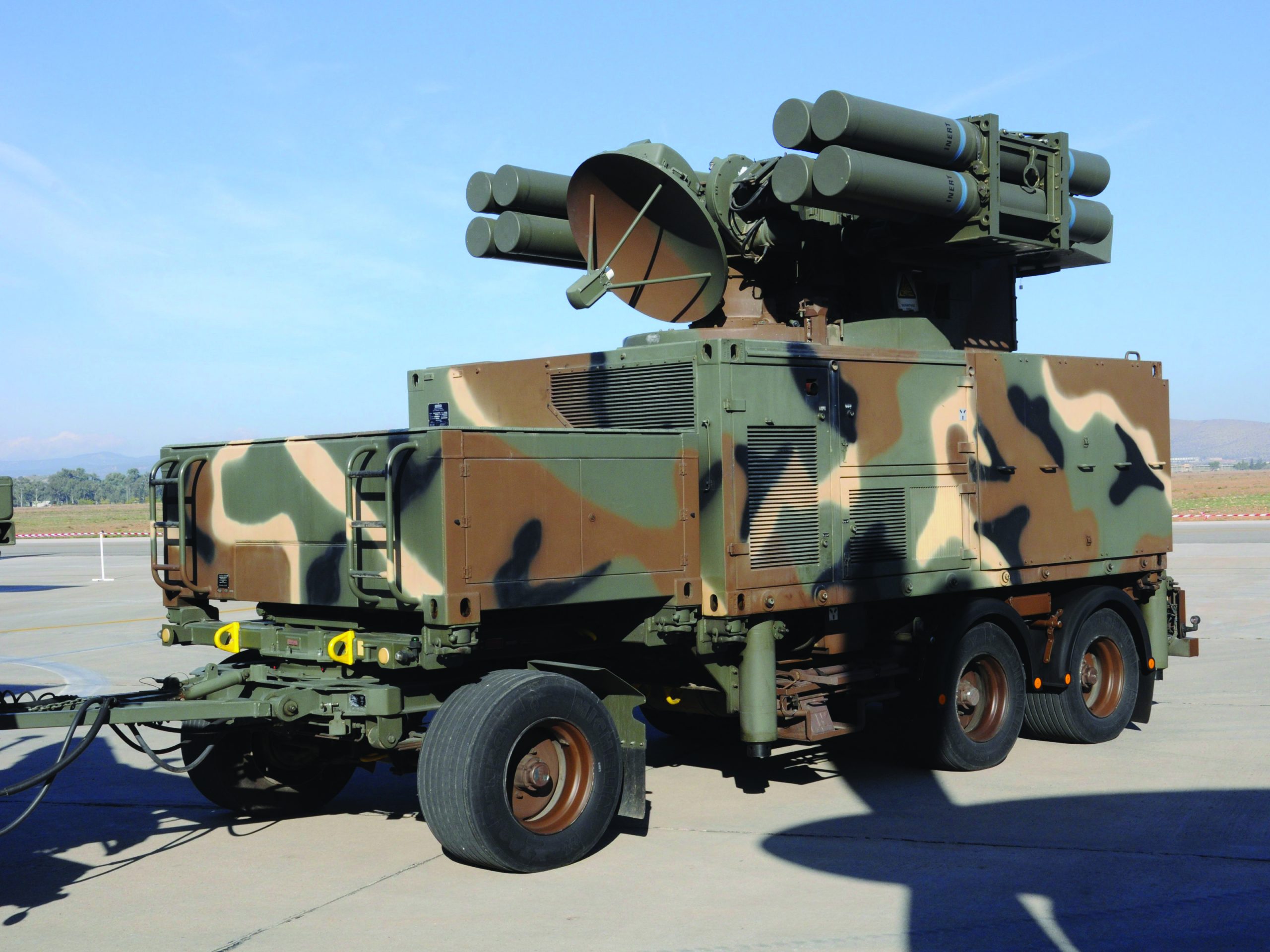
Electronic identification methods
Electronic identification between friendly and hostile targets means identifying the target by sending it an encrypted signal requesting identification and if it was able to respond in another coded signal it is considered friendly, if not then it’s considered an “enemy”.
The need for electronic distinction methods began with the use of radar for military purposes in 1939, and since then, identification systems have become one of the main elements that are constantly being developed, to keep pace with modern developments in radar devices.
Without identification and distinction systems for aircrafts, the long-range weapons fired by these aircrafts could accidentally hit friendly military or civilian aircrafts.
Using air-to-air identification systems, the pilot can identify a friendly target without relying on the ground guidance center.
The United States, Germany, Canada, and the Netherlands all use a system called the Mark XII, while the British Royal Air Force uses its own system known as the Mark X.
In 1974, Britain began producing an identification system to cover the needs of the fleet and the air force, gradually replacing it with the Mark X system.
This system works in two ways: The first method depends on the signal pulses sent to clarify the identity of unknown targets, and the second is passive, as it only receives the waves emitted by the targets.
The IFF3500 system is used with the “Tornado”, “Nimrod” and “Phantom” aircrafts operating with the British Royal Flying Corps, and the same device was installed with “Seeking” helicopters operating with the US Navy, this device is equipped with an antenna and is characterized by high accuracy in determining the azimuth angle of air-born targets.
Various advanced types of identification systems have emerged and are used with air defense units, such as the IFF890 identification system, which was developed into the IFF891B system, and can be used with the RBS-70 missile system, where the missile launch factor provides the response to distinction at the speed required for aircraft flying at low altitudes.
The system can link with the missile launch control circuits and the response device of the identification device, which prevents the launch in the event of receiving an answer from the friendly aircraft.
The identification devices used with shoulder-mounted anti-aircraft missiles have also been developed, to work with batteries, be lightweight, and adapt to different conditions.
NATO currently uses the Mark XV identification system, its weaknesses are short-range and poor resistance to obstruction methods, and its design was based on the same principle as the Mark XII system but uses advanced technology to reduce interference and false alarm signals.
On the other hand, NATO has developed the NIS Q&A system to distinguish friendly aircrafts using automatic code change, and it is fed information by a set of various monitoring and sensing means, which provide it with a huge amount of different data and information for the computer to study, analyze, compare, predict and make conclusions to overcome the obstacles posed by the nature of aircraft and advanced targets designed to avoid detection.
The capabilities of the artificial intelligence used in the system enable it to distinguish targets whose external appearance has been modified or changed for deception, or for any other reason such as adding additional fuel tanks under the wing of the aircraft or equipping a naval vessel with an additional self-defense missile system, which leads to mistakes in traditional identification systems, which rely on still images.
Modern technologies allow for the existence of an automatic encryption system for each country separately, at the same time, with different specifications, to achieve the required confidentiality purposes. The system program costs about 6 billion dollars and is the result of a joint effort by France, Germany, and Britain.
The system aims to achieve distinction between American and European pilots over long ranges, during real battle conditions.
Other new systems have been developed to distinguish between friend and foe, and according to the standards of the North Atlantic Treaty Organization (NATO), these systems will be equipped to the French army’s “Mistral” missile launch batteries, the French air defense’s command and control stations “Martha” and armored vehicles that launch new-generation Crotale NG missiles of the French Air Force.
The MSR 1000 I identification system is newly developed for near and very near range operations, to suit different platforms, such as the Stinger missile platforms, the German LeFlaSys missile platforms, or the British HVM.
This system can quickly and securely identify aircrafts by using sophisticated coding techniques to avoid hostile radio interference, thus overcoming the limitations of current identification systems, and facilitating the work of commanders by helping them decide whether to engage an aircraft or not.
Identification of ground targets
In the conditions of the ground battle, where dust, smoke, and fog obscure direct vision, the traditional means of identification become insufficient to respond to the constantly changing battle situations, making the use of a device for identifying ground targets to confirm identity necessary.
Therefore, many militaries plan to equip their vehicles with electronic identification devices, linking these devices to command and control networks in the field, rather than just transmitters and receivers.
The American forces use identification devices on vehicles, which rely on transmitting infrared radiation, which can be received by night vision devices on board vehicles and aircraft, at a distance of up to five miles, and use fluorescent orange panels above the vehicles, to facilitate identification by aircraft.
Laser beacons are sources of laser radiation at a specific wavelength to achieve distinction between friendly missiles that install the laser beam and hostile targets, especially in urban warfare, where agents or special forces throw the laser beacon near the target they want to destroy, which can be a gathering headquarters for fighters, or an ammunition depot.
Then there are the drones, which can launch the laser-guided missile at the target to deliver a direct and destructive hit.
During the Kuwait Liberation War, the procedure for friendly fire injury was to mark all Coalition Forces vehicles with an inverted V, which was painted with reflective infrared paint. US forces also used an element that emits infrared radiation, which can be seen through night vision glasses, from a distance of 1.2 miles.
Some devices were developed for the French army, as part of the development of the French Future Fighter system, such as the BIFF identification device, which was produced to meet the requirements of NATO.
This device was tested on battle tanks, the AMX-10RC reconnaissance vehicle, and the VAB armored troop carrier, it consists of an Interrogator / Autonomous Responder, which can be externally mounted to any load-bearing surface.
Development trends and modernization
The identification device must recognize the different types of targets, the air defense commander may face such as various types of aircrafts, including fighters, transport aircraft, helicopters, and bombers, as each type has its own signal on the radar screen, but these signals are not sufficient to distinguish the aircraft, given that most planes share certain technical properties and the inability to differentiate between what is friendly and what is hostile of the same type. The solution to this problem was to resort to new means of monitoring, control, and sensors, such as “radar-thermal-acoustic-optical-sonar-laser-wireless”, as these means provide a large amount of detailed data on the properties, nature, and location of the target.
This data is then processed using computers that can collect it, extrapolate detailed information and extract an approximate image of the target, and then compare it to the images stored in memory units to identify the target with great accuracy and in a relatively short time, allowing the commander of the aircraft ample time to deal with the target.
Not all computers in use today have the specifications required to accomplish this task, so faster computers are being built that can handle the needs of stealth aircraft and nuclear attack submarines.
One of the main features of the new identification systems is their reliance on special techniques to achieve their tasks, such as the use of Pattern Recognition technology, which uses new methods to process received data from monitoring, sensing, and control elements, and uses new coding languages to deal with high-speed computers, so that the computer tries to “deduce The nature and type of the target, completing the missing parts of the data, or “inferring” the features of the target based on the data stored in its memory, a task that traditional computers cannot do yet.
Some of the new methods used in modern identification systems are the Aided Target Acquisition Classification System, which collects data from three sources:
1- Infrared surveillance and monitoring system, which provide an incomplete descriptive image of the target.
2- A laser monitoring system that provides an image of the target, the accuracy of which depends mainly on the extent of the operation of the target.
3- A radar monitoring system that operates in the millimeter-wave range, providing a more detailed image of the target, the parameters of the location around it, and the nature of the target can be determined, whether it is tracked or on wheels (in the case of ground targets).
The system’s computer collects and processes these data from its three sources, in the form of digital pulses, in a secure secret system using a deductive mathematical method based on logical inference and not on mere rigid calculations typically used in traditional computers, the target is then identified by exploiting the system’s other capabilities, and the data of the stored targets within it.
Modern identification systems also use parallel processing technology to shorten the time required for identification. To increase the ability of these systems to distinguish targets, wireless communications to and from the target are closely monitored and analyzed, to help determine nationality (from the language used), and the nature of the target’s potential operation (from the content of exchanged messages).
In addition to extracting his location coordinates and feeding them to the monitoring radar network, which in turn will pursue and track the target, a task that in normal cases requires highly skilled crews, however, Computers undertake these tasks to ensure speed and accuracy in extracting results and reduce the possibility of human error and false reports.
The process of identifying targets requires relying on passive sensors and devices, to ensure as much delay as possible in the target’s awareness of the presence of the identification system or that it’s entering its range.
Therefore, the use of active monitoring means (such as radar) is delayed to the final stage, to confirm the data immediately before engaging the target. The confidentiality required for the command, control, communications, and intelligence systems in general, and identification systems in particular, has become of critical importance, as this confidentiality necessitates having an automatic encryption system for identification systems and the ability to confront electronic obstruction of various types.
Conclusion
When the armed forces of any country suffer losses of life or equipment this leaves negative effects on those forces, the most important of which may be the morale, especially if it is rumored among those forces that these losses were the result of friendly fire.
However, as modern warfare and the weapons used in it develop, the measures necessary to prevent injury as a result of friendly fire, develop as well, getting regular updates according to the experiences gained during the wars.
As the wars of recent years have revealed, so far no identification system is insured against misuse.
« By: Major General Dr. Ali Muhammad Ali Rajab (military researcher and strategic expert)




